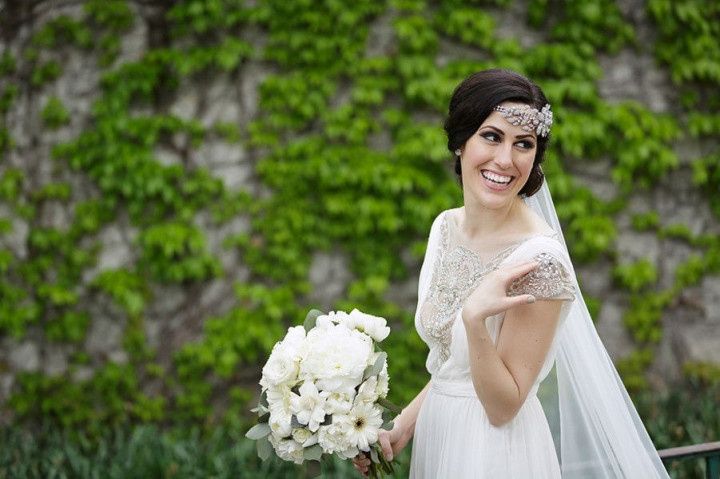When Did Brides Start Wearing White Wedding Dresses
The (Surprising!) History of the White Wedding Dress
It turns out that white wedding dress history isn't as long as you might think! Here's a rundown of how white wedding dresses became so popular.


While wedding dress styles trends change from season to season (Sleeves! Fairytale vibes! Wildflowers!), one thing has stayed relatively constant: White is easily the most widely-worn color for wedding gowns. In looking at white wedding dress history, you might be surprised to learn that white has not always been the color of choice for wedding dresses in Western culture, nor is it necessarily the symbol of purity commonly thought. In fact, white wedding dresses only came into fashion in the mid-19th century and became customary in the mid-20th century. Nowadays, 82 percent of U.S. brides wear white, according to the WeddingWire Newlywed Report—but how did this color become so popular?
Learn more about white wedding dress history, and get inspired to shop for your own gown—in white or any hue you choose!
The first brides wore wedding dresses in all colors.
From Biblical times through the early 19th century, brides did not traditionally wear white. Not only was a white dress seen as impractical, it was not financially wise for brides to purchase a dress to wear only once. Therefore, most brides simply wore their fanciest dress on their wedding day. For brides in the lower classes, that often meant wearing a black dress. Brides with more means wore showier gowns in lush fabrics, featuring gold and silver embroidery, as well as fur. But these dresses could and would be worn again.
Queen Victoria started the white wedding dress trend.
In 1840, Queen Victoria married Prince Albert in one of the first heavily-photographed royal weddings of the time. She chose to wear a white dress in Honiton lace order to help the struggling factory where the fabric was created. She accessorized her white gown with a flower crown in lieu of a tiara to show that she would be a more down-to-earth monarch. Because this was one of the first "celebrity weddings," the photos were shared around the world. Brides took note of Queen Victoria's white gown, and thus began white wedding dress history as we know it.
A white wedding dress became a status symbol.
After Queen Victoria's wedding, wealthier brides started wearing grand white gowns, because they could afford to have their white attire professionally cleaned (brides would still wear their wedding dress long after the big day!). Some books at the time noted that white wedding dresses were ideal because they represented purity and innocence, but according to white wedding dress history, that wasn't the case. White was seen as a color for the rich, more about showing off one's wealth than one's virginity.
White wedding dresses didn't hit mass popularity until after World War II.
During the Great Depression and World War II, fancy fabrics were even harder to come by, so luxe white wedding dresses were replaced with simple suits in non-white hues. Some wedding dresses at the time were even made from repurposed silk parachutes! After the war, white wedding dresses became more available, with tea-length looks inspired by Audrey Hepburn considered most fashionable. Long gowns were soon in style, and once Princess Diana walked down the aisle in her grand ivory silk taffeta and lace gown in 1981, the white wedding dress' place in history was solidified.
Brides in Eastern cultures don't wear white.
When we discuss white wedding dress history, we are referring mainly to Western cultures in the Americas and Europe. Many Eastern cultures consider white to be an unlucky hue, so brides wear attire in other colors. Red is actually the most popular color for brides in India, China, Pakistan, and Vietnam, among other countries. African brides often infuse bright colors into their wedding day looks, as well.
Non-white wedding dresses are in style, too.
While most Western brides wear white, those aren't the only options available these days. In recent years, we've seen wedding dresses in shades of pink, blue, gold, gray, and even black hit the runways, ideal for brides looking for something a bit different. Many celebrities, including Sarah Jessica Parker, Reese Witherspoon and Jessica Biel, and have eschewed white wedding dresses for a more unique look. Our advice: Find a wedding dress that suits your personality and style, whether it's white or another color. Yes, white wedding dresses have a storied history, but so do wedding dresses in all hues!
Source: https://www.weddingwire.com/wedding-ideas/white-wedding-dress-history
0 Response to "When Did Brides Start Wearing White Wedding Dresses"
Post a Comment